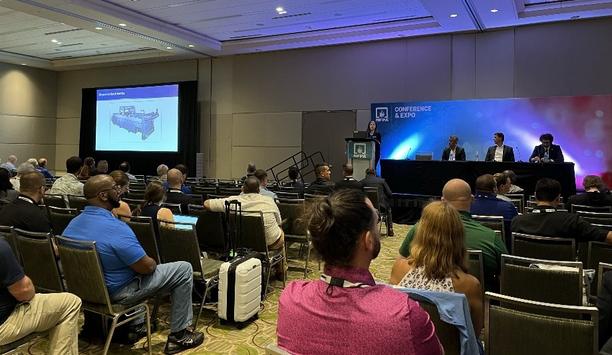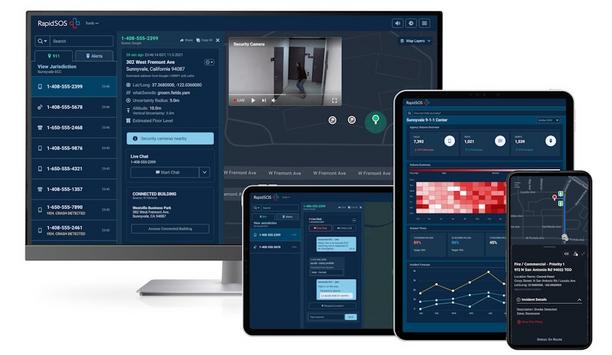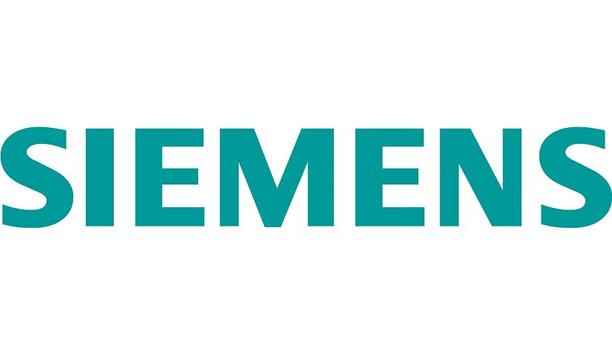Colossus, a fire-fighting robot, was deployed in the nave of the Notre Dame cathedral during the destructive fire on April 15 in Paris. Pumping water high into the air and onto the flames, the robot was instrumental in turning the tide for firefighters, extinguishing the fire and lowering temperatures inside the nave. Colossus was developed by the French Company Shark Robotics and deployed with the Paris Fire Brigade.
The caterpillar-tracked robot stands just two and a half feet tall, weighs 1,000 pounds and can carry another 1,100 pounds of equipment. At Notre Dame it helped firefighters extinguish the blaze and mostly save 850 years of history.
It helped firefighters extinguish the blaze and mostly save 850 years of history
Robots in firefighting
The historic use of Colossus illustrates the growing role of robotics in firefighting, including mobile systems with advanced features to assist an operator in navigation and to perform a wider range of tasks.
According to Brian Lattimer, Ph.D., Associate Professor at Virginia Tech, a robotic system is a mechanical device that performs a task using sensors to perceive its environment, computer programs to control the robot based on its environment, and a human operator to assist with robot operation. A variety of robotic systems support a range of fire events, whether involving structures, vehicles, aircrafts, shops or wildlands, he says.
In addition, the functionality of robot systems varies to support firefighters in tasks such as sizing up the fire, identifying trapped people, locating the fire, monitoring conditions, controlling fire spread and suppression, says Lattimer.
Sizing up the fire, identifying trapped people, locating the fire, monitoring conditions, controlling fire spread and suppression
automated robotics
Also, aerial robotics such as drones provide added situational awareness, and indoor robots can eliminate fires at close range. There are also fixed systems, such as automated fire monitors, that can be used to extinguish significant fire hazards rapidly.
Several robots have found utility in the fire service in recent years.
 |
| Fire-fighting robots were essential for suppressing the blaze at Notre Dame |
Other life-saving robots
The Tactical Hazardous Operations Robot (THOR), developed for the U.S. Navy’s Shipboard Autonomous Firefighting Robot (SAFIR) program, is a human-like robot that can travel across unstable floors on ships, utilize hoses, and open doors. Because Navy ships have hazardous materials on board, extinguishing fires is critical. The robot uses stereoscopic thermal imaging and LiDAR (light detection and ranging) sensors to navigate. It walks and works semi-autonomously with the help of a remote operator.
The Thermite Robot is a small tank created by Howe and Howe Technologies for the U.S. Army. The Thermite RS1-T4 is remotely operated with a belly-pack controller that provides high-definition and infrared video in real-time. It has the power to push vehicles from its path, the agility to climb stars and can output 1,250 gpm of water at 200 psi. Thermite is designed as an advanced tool to help operators combat fires safely and efficiently.
It has the power to push vehicles from its path, the agility to climb stars and can output 1,250 gpm of water at 200 psi
Turbine Aided Firefighting Machine (TAF 20) is a robot created by Emicontrols, a subsidiary of the TechnoAlpin Group. Designed for small spaces such as tunnels, it uses a turbine to clear smoke, move obstacles with a bulldozer blade and focus its water spray from a mist to a jet.
an emerging technology component
The Fire Ox, a robotic firefighting vehicle that carries its own water tank, is designed as a first response unit. It suppresses fires, assists in search and rescue, and can handle dangerous materials. It is semi-autonomous and can be controlled from up to 200 miles away.
Research at Purdue University has yielded firefighting robots with an automatic T-valve system, a “discharge valve,” that can remove water from the fire hose whenever a robot moves to a new location. The technology takes less energy and enables a firefighting robot to maneuver more quickly and efficiently around a burning structure.
Robots can withstand hazardous environments and help to avoid injury to firefighters. They are an emerging technology component that will impact the art and science of firefighting for years to come.







































